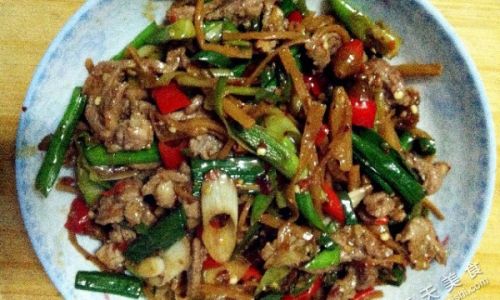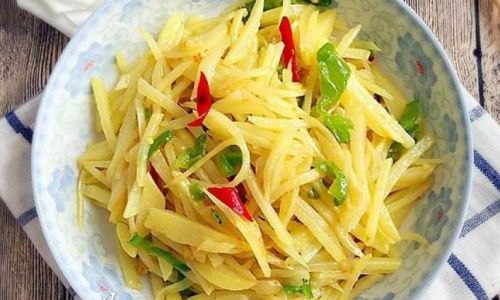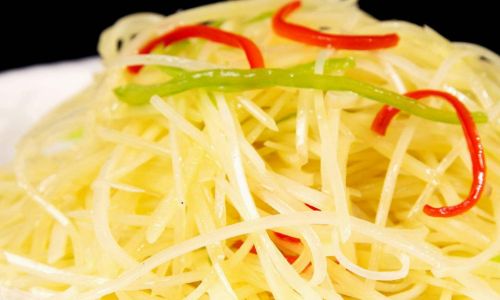Table of content
Stir-fried Chinese sausage, or lap cheong, is a beloved dish in Asian cuisine, celebrated for its rich, savory flavor and versatile nature. This cured meat, typically made from pork and a blend of spices, including sugar, soy sauce, and rice wine, offers a delicate balance of sweet and salty notes. While it can be enjoyed on its own, pairing it with complementary vegetables and ingredients elevates its texture and taste, transforming a simple meal into a culinary delight. This article explores the art of stir-frying Chinese sausage, highlighting the best side dishes, cooking techniques, and tips to achieve restaurant-quality results at home.
Understanding Chinese Sausage: Flavor and Texture
Before diving into pairings, it’s essential to grasp the unique characteristics of Chinese sausage. Unlike fresh sausages, lap cheong is air-dried and cured, resulting in a firm, slightly chewy texture. Its flavor is intensely aromatic, with hints of sweetness from the sugar and umami depth from the fermented soy sauce. When stir-fried, the sausage releases a smoky aroma and a subtle caramelized taste, making it a robust base for vegetable-forward dishes.

The Best Vegetables to Pair with Stir-Fried Chinese Sausage
The key to a memorable stir-fry lies in selecting vegetables that contrast with and enhance the sausage’s flavors. Below are ten must-try pairings, each offering distinct textures, colors, and nutritional benefits.
Garlic Sprouts (蒜苗)
Garlic sprouts, or suan miao, are a classic pairing for Chinese sausage. Their crisp, slightly pungent stalks and tender green leaves add a refreshing crunch to the dish. The garlic notes in the sprouts harmonize with the sausage’s sweetness, creating a balanced flavor profile.
Cooking Tip: Slice the sprouts diagonally into 2-inch segments. Add them to the wok during the final 2 minutes of cooking to retain their vibrant color and texture.
Bok Choy (小白菜)
Bok choy, with its mild, earthy flavor and tender leaves, acts as a neutral canvas for the sausage’s boldness. Its high water content also adds a subtle juiciness to the stir-fry.
Preparation: Separate the leaves from the stems. Stir-fry the stems first for 1–2 minutes, then add the leaves to wilt slightly.
Bell Peppers (彩椒)
Red, yellow, or green bell peppers contribute sweetness and a vibrant pop of color. Their crisp texture holds up well against the sausage’s chewiness.
Flavor Boost: For a hint of smokiness, char the peppers slightly over an open flame before slicing.
Onions (洋葱)
Onions, particularly sweet varieties like Vidalia, add caramelized sweetness when stir-fried. They also help mellow the sausage’s saltiness.
Technique: Sauté sliced onions until golden brown before adding the sausage to layer flavors.
Shiitake Mushrooms (香菇)
Earthy shiitake mushrooms bring umami depth to the dish. Their meaty texture pairs beautifully with the sausage’s density.

Preparation: Rehydrate dried shiitake mushrooms in warm water for 20 minutes, then slice and stir-fry until golden.
Snow Peas (荷兰豆)
Snow peas offer a crisp, grassy sweetness and a satisfying snap. Their bright green hue also enhances the dish’s visual appeal.
Quick Cook: Blanch snow peas in boiling water for 30 seconds before stir-frying to preserve their color and crunch.
Carrots (胡萝卜)
Thinly sliced carrots add natural sweetness and a vibrant orange hue. They also provide a slight crunch when stir-fried briefly.
Tip: Use a mandoline or vegetable peeler to create thin, even slices for fast cooking.
Celery (芹菜)
Celery’s crisp stalks and subtle bitterness cut through the richness of the sausage, creating a refreshing contrast.
Flavor Pairing: Combine celery with a splash of rice vinegar for a tangy kick.
Bamboo Shoots (竹笋)
Canned or fresh bamboo shoots add a tender, slightly fibrous texture and a mild, nutty flavor.
Preparation: Rinse canned bamboo shoots thoroughly to remove any metallic taste before stir-frying.
Lotus Root (莲藕)
Lotus root slices offer a crunchy, starchy element with a hint of floral sweetness. Their unique appearance also adds visual interest.

Cooking Method: Parboil lotus root slices for 3 minutes to soften slightly before adding to the wok.
Advanced Pairings and Add-Ins
For those seeking to experiment, consider these unconventional yet delicious additions:
- Dried Chilies: A few crushed dried chilies add heat and complexity.
- Fermented Black Beans: These salty, pungent beans deepen the dish’s umami profile.
- Pineapple: Diced pineapple introduces a tropical sweetness that balances the sausage’s saltiness.
- Tofu: Crispy fried tofu cubes add protein and a contrasting texture.
Step-by-Step Cooking Guide
Mastering the stir-fry technique ensures that the sausage and vegetables cook evenly while retaining their textures. Follow these steps for perfection:
Preparing the Sausage
- Slicing: Cut the sausage diagonally into thin slices (¼-inch thick). This maximizes surface area for caramelization.
- Optional Steaming: For a softer texture, steam the sausage slices for 5 minutes before stir-frying.
Prepping Vegetables
- Uniformity: Cut vegetables into similar sizes to ensure even cooking.
- Separate Stems and Leaves: For leafy greens like bok choy, separate stems and leaves, as stems take longer to cook.
Aromatics and Seasonings
- Ginger and Garlic: Mince fresh ginger and garlic for aromatic depth.
- Sauces: Use a combination of soy sauce, oyster sauce, and a touch of rice wine for balance.
- Sugar: A pinch of sugar enhances the sausage’s natural sweetness.
Stir-Frying Technique
- High Heat: Use a wok or large skillet over high heat to sear the sausage and vegetables quickly.
- Order of Cooking:
- Sausage: Stir-fry slices for 2–3 minutes until slightly caramelized. Remove and set aside.
- Aromatics: Sauté ginger and garlic for 30 seconds until fragrant.
- Vegetables: Add heartier vegetables first (e.g., carrots, mushrooms), followed by quicker-cooking ones (e.g., snow peas, garlic sprouts).
- Reintroduce Sausage: Return the sausage to the wok and toss with vegetables.
- Season: Drizzle with sauces and toss to coat.
Finishing Touches
- Garnish: Sprinkle with sesame seeds, chopped cilantro, or thinly sliced scallions.
- Acid: A squeeze of lime or a splash of black vinegar brightens the dish.
Common Mistakes to Avoid
- Overcrowding the Wok: Cook in batches if necessary to prevent steaming instead of stir-frying.
- Overcooking the Sausage: Excessive heat can render the sausage tough and dry.
- Underseasoning: Taste and adjust seasonings before serving, as cured meats vary in saltiness.
Serving Suggestions
Stir-fried Chinese sausage pairs wonderfully with:
- Steamed Rice: A neutral base to soak up the flavors.
- Fried Rice: Incorporate leftover sausage and vegetables into a fried rice mix.
- Noodles: Toss with egg noodles or rice vermicelli for a heartier meal.
- Lettuce Wraps: Serve as a filling for crisp lettuce cups for a low-carb option.
Healthier Adaptations
For a lighter version:
- Reduce Oil: Use a non-stick wok and minimal oil.
- Add Fiber: Include extra vegetables like broccoli or spinach.
- Lean Protein: Mix in diced chicken or shrimp for added variety.
Cultural Significance of Stir-Fried Chinese Sausage
Beyond its culinary appeal, Chinese sausage holds cultural significance, often featured in festive dishes like lo mai gai (glutinous rice with sausage) during Lunar New Year celebrations. Its ability to elevate simple ingredients reflects the Chinese philosophy of balancing flavors and textures—a tradition that continues to inspire home cooks and chefs alike.
Conclusion
Stir-fried Chinese sausage is a testament to the magic of umami-rich cured meats and fresh produce. By experimenting with vegetables, mastering stir-fry techniques, and embracing seasonal ingredients, you can create endless variations of this timeless dish. Whether served as a quick weeknight meal or a centerpiece for gatherings, the harmonious blend of sweet, salty, and savory flavors ensures that stir-fried Chinese sausage remains a beloved classic. So grab your wok, sharpen your knife, and let the sizzle begin!






0 comments